41 understanding carbs on food labels
Reading labels | Diabetes UK This video will help you to understand food labels and learn about the carbohydrate levels in everyday meals, with tips and advice from Jess along the way. Key points Always look at the 'total carbohydrate' on the label when carb counting. This will make sure you are counting both the complex (starchy) and simple (sugary) carbs in your food. Understanding Food Labels | The Nutrition Source | Harvard T.H. Chan ... Under the Food Allergen Labeling and Consumer Protection Act of 2004, eight major food allergens—milk, fish, tree nuts, peanuts, shellfish, wheat, eggs, and soybeans—are required to be listed in a "contains" statement near the Ingredients list if present in a food. An example would be "contains wheat, milk, and soy."
A Complete Guide to Reading and Understanding Nutrition & Ingredient Labels You'll never know unless you check, and there are some helpful tips to keep in mind while reading the label. Nutrition Facts. Before you jump into the ingredient list, it can be beneficial to read the Nutrition Facts label. In particular, pay attention to the serving size and servings per container.
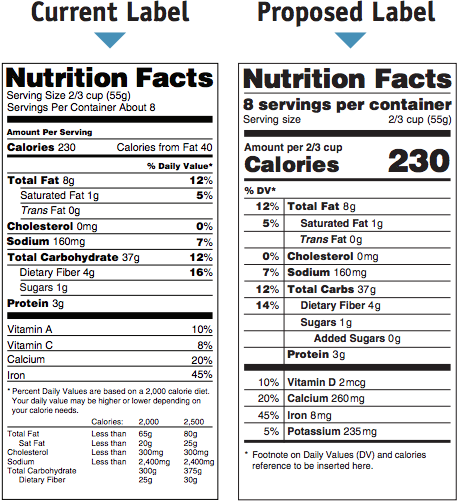
Understanding carbs on food labels
dtc.ucsf.edu › learning-to-read-labelsLearning To Read Labels :: Diabetes Education Online On a nutrition food label, subtract the fiber from the total carbohydrate amount. When you read food labels, the grams of sugar are already included in the total carbohydrate amount, so you do not need to count this sugar amount separately. The grams of sugar listed include both natural sugars, from fruit or milk, and added sugars. Food labels - NHS Nutrition labels are often displayed as a panel or grid on the back or side of packaging. This type of label includes information on energy (kJ/kcal), fat, saturates (saturated fat), carbohydrate, sugars, protein and salt. It may also provide additional information on certain nutrients, such as fibre. Learning To Read Labels :: Diabetes Education Online On a nutrition food label, subtract the fiber from the total carbohydrate amount. When you read food labels, the grams of sugar are already included in the total carbohydrate amount, so you do not need to count this sugar amount separately. The grams of sugar listed include both natural sugars, from fruit or milk, and added sugars.
Understanding carbs on food labels. How to understand food labels | Eat For Health The Nutrition Information Panel on a food label offers the simplest and easiest way to choose foods with less saturated fat, salt (sodium), added sugars and kilojoules, and more fibre. It can also be used to decide how large one serve of a food group choice or discretionary food would be and whether it's worth the kilojoules. Types of Carbohydrates | ADA - American Diabetes Association Did you know there are three main types of carbohydrate in food? There are. Starches (also known as complex carbohydrates) Sugars. Fiber. You'll also hear terms like naturally occurring sugar, added sugar, low-calorie sweeteners, sugar alcohols, reduced-calorie sweeteners, processed grains, enriched grains, complex carbohydrate, sweets, refined grains and whole … Hand Portion FAQ: A Guide from Precision Nutrition Question #2: “How accurate are hand portions?” Our internal calculations show hand portions are about 95 percent as accurate as carefully weighing, measuring, and tracking your food.With substantially less effort and time involved.. And since calorie databases—the tool most people use to track calories and macros—can be off by as much as 20 percent, the five percent difference … Understanding Food Labels - Nutrition: Science and Everyday Application ... The FDA uses the following definitions for interpreting the %DV on food labels:4 5%DV or less means the food is low in a nutrient. 10% to 19%DV means the food is a "good source" of a nutrient. 20%DV or greater means the food is high in a nutrient.
Understanding food labels | Diabetes UK The labels show how many calories are in the food or drink and are also colour coded to show whether the food is low (green), medium (amber) or high (red) in fat, saturated fat, sugar and salt. The information on the front of the pack also tells you how the portion of the food contributes to the Reference Intake (RI) of an adult. Carb counting – NDSS This program helps you recognise which foods contain carbohydrates (carbs), and learn about different methods and tools to help you count carbs in the food you eat. You can choose which modules are right for you—you don’t need to complete them all. You can just learn the basics, or progress further to gain more detailed information and skills. How To Read Nutrition Labels (Like a Pro) - Ditch The Carbs Firstly you need to understand the difference between total and net carbs. TOTAL CARBS = sugars + starches +fibre NET CARBS = total carbs - fibre Carbohydrates will be on the nutrition label are often broken down into carbohydrates, sugars, starch, and fiber. However, each brand may display its nutritional contents differently. Low Carb Food List Printable - Carb Chart | Keto Size Me 22.11.2021 · Tip: Make sure you take this Low Carb Food List Printable with you everywhere. You can stick one on your fridge, carry on in your purse, put on in your car, and take one with you when you travel! Low Carb Seafood: Want to order your crab, shrimp, and lobster online? Try Cameron’s Seafood! Shrimp – 0 Carbs; Crawfish – 0 Carbs; Crab – 0 Carbs
Understanding Food Nutrition Labels | American Heart Association 1 - Start with the serving information at the top. This will tell you the size of a single serving and the total number of servings per container (package). 2 - Next, check total calories per serving and container. Pay attention to the calories per serving and how many calories you're really consuming if you eat the whole package. Low Carb Guide to Understanding Nutrition Labels - Virta Health According to labeling laws in the U.S., if a food contains less than 0.5g of trans fat per serving, the label can say 0g, so be sure to read the list of ingredients. You can spot trans fats by the words "hydrogenated" or "partially hydrogenated" with oils. Sugar-free or Low-carb: Don't be fooled by clever packaging and slick marketing. How To Read Food and Beverage Labels - National Institute on Aging These foods have a legal limit to how many calories, grams of fat, or carbohydrates (carbs) they can contain per serving. However, if a serving size is very small, you may end up eating multiple servings in one sitting, ultimately consuming the same amount of fat, calories, and carbs as the regular version of the food. Multigrain. PDF Read the Food Label for Carbohydrates - National Institutes of Health Read the Food Label for Carbohydrates Food labels help you choose foods that are lower in calories and in carbohydrates and sweeteners. Here is a food label for a 12-ounce regular soda. The label provides lots of useful information. 1. Serving Size and Number of Servings The serving size is 12 ounces. There's 1 serving in this container. 2.
› diet › featuresWhat You Need to Know About Food Expiration Dates - WebMD Around 90% of people in the U.S. don't understand expiration dates on food labels. They throw away food that is still good or could be frozen for later. Your food may be good for slightly more ...
ketosizeme.com › low-carb-food-list-printableLow Carb Food List Printable - Carb Chart | Keto Size Me Nov 22, 2021 · Shirataki Noodles – 0 Carbs; White Vinegar – 0 Carbs; Balsamic Vinegar – 0 Carbs; Red Wine Vinegar – 0 Carbs; Rice Vinegar (seasoned) 3 grams per tbsp. Soy Sauce – 1 gram per tablespoon; Mustard – 0 Carbs; Unflavored, powdered gelatin – 0 Carbs (use as a binder in recipes) Most Hot Sauces – 0 Carbs
What You Need to Know About Food Expiration Dates - WebMD Around 90% of people in the U.S. don't understand expiration dates on food labels. They throw away food that is still good or could be frozen for later. Your food may be good for slightly more ...
Biden admin to propose nutrition labels on front of food packaging in ... The Food and Drug Administration will research and propose a standardized front-of-package labeling system to help consumers more readily understand nutrition information, the White House said ...
Understanding Food Nutrition Labels - American Heart Association Remember that the information shown in the label is based on a diet of 2,000 calories a day. You may need less or more than 2,000 calories depending upon your age, gender, activity level, and whether you're trying to lose, gain or maintain your weight. When the Nutrition Facts label says a food contains "0 g" of trans fat, but includes ...
diabetes.org › healthy-living › recipes-nutritionTypes of Carbohydrates | ADA - American Diabetes Association Did you know there are three main types of carbohydrate in food? There are. Starches (also known as complex carbohydrates) Sugars. Fiber. You'll also hear terms like naturally occurring sugar, added sugar, low-calorie sweeteners, sugar alcohols, reduced-calorie sweeteners, processed grains, enriched grains, complex carbohydrate, sweets, refined grains and whole grains.
Food Labels and Counting Carbs - dummies Total Carbohydrate is listed in grams. Because %Daily Value is written in bold and off to the right side of the label, and lined up neatly with the actual amount, it is easy to allow your eye to zero in on the %Daily Value rather than the actual amount in grams.
How to Use the Nutrition Facts Label — Diet Doctor 3. Calculate net carbs per serving. Third, check the grams of dietary fiber per serving (circled in green, above). Subtract the fiber (green) from the total carbohydrates (blue) to get the net carbs. This chocolate has 9 grams of net carbs per serving (14g carbs - 5g fiber = 9g net carbs).
› health › food-nutritionSimple Carbohydrates vs. Complex Carbohydrates - Healthline Aug 19, 2020 · Overview. Carbohydrates are a major macronutrient and one of your body’s primary sources of energy. Some weight loss programs discourage eating them, but the key is finding the right carbs ...
Food Labels: Carbohydrates | Home & Garden Information Center Listed below total carbohydrate on the food label are the values for dietary fiber and sugars. It is voluntary to list the number of grams of sugar alcohols (polyols) per serving. Dietary fiber is included in total carbohydrate. Fiber promotes bowel regularity and helps fight some diseases.
Get Smart On Carbs | ADA - American Diabetes Association As you'll see on the nutrition labels for the food you buy, the term "total carbohydrate" refers to all three of these types. The goal is to choose carbs that are nutrient-dense, which means they are rich in fiber, vitamins and minerals, and low in added sugars, sodium and unhealthy fats. When choosing carbohydrate foods:
How to Understand and Use the Nutrition Facts Label | FDA - U.S. Food ... That is two times the calories and nutrients shown in the sample label, so you would need to double the nutrient and calorie amounts, as well as the %DVs, to see what you are getting in two...
Reading food labels: Tips if you have diabetes - Mayo Clinic Put sugar-free products in their place. Sugar-free doesn't mean carbohydrate-free. Sugar-free foods may play a role in your diabetes diet, but remember that it's equally important to consider carbohydrates as well. A sugar-free label means that one serving has less than 0.5 grams of sugar. When you're choosing between standard products and ...
› managing › eat-wellFood Labels | CDC - Centers for Disease Control and Prevention If you eat the whole thing, you are eating 8 times the amount of calories, carbs, fat, etc., shown on the label. Total Carbohydrate shows you types of carbs in the food, including sugar and fiber. Choose foods with more fiber, vitamins, and minerals. Choose foods with lower calories, saturated fat, sodium, and added sugars. Avoid trans fat.
How to Read a Food Label | Atkins To complicate matters still further, carbohydrates are comprised of several subgroups, which include dietary fiber, sugar, sugar alcohol and other carbohydrates—a kitchen-sink grouping of gums, lignans, organic acids and flavenoids. (These individual items can be assayed.) The FDA requires that a nutrition label include the total carbohydrates.
Understand Nutrition Labels - Best10 If a food item has the claim of being "low-fat" on the label, there is less than 3g total fat per 100g or 1,5g per 100ml of the product. Some minced meat and processed meat might say "lean" or "extra lean" on the label. Lean mince has less than 10% total fat and the extra lean mince has less than 5% total fat. 7.
Participant Guide - More About Carbs - Centers for Disease … Whole grains Refined grains Whole grain foods include: Barley Bread and other baked goods made with 100% whole wheat flour Brown and wild rice Oats and oatmeal 100% whole grain cereal Pasta made with 100% whole wheat flour Popcorn Tortillas made with 100% whole wheat flour or 100% cornmeal Refined grain foods include: Bread and other baked goods made with …
High Glycemic Foods - Healthy Eating -- Food Matters -Don't eat higher glycemic foods, even healthy ones, without adding some protein food.-Don't skip carbs altogether or radically limit them.-Don't fixate so much on the composition of your food that you forget to enjoy it! High Glycemic Foods - DO:-Familiarize yourself in a general sense with high and low glycemic foods.
Reading Food Labels | ADA - American Diabetes Association The Nutrition Facts labels on foods are really the key to making the best choices. We'll cover the basics so that these labels make shopping easier for you. Get started Understanding Carbs You've heard it all. From carb-free to low-carb, to whole and empty carbs, it's hard to know what it all means. Learn more Food & Blood Sugar
Food Labels | CDC - Centers for Disease Control and Prevention 20.9.2022 · Understanding the Nutrition Facts label on food items can help you make healthier choices. The label breaks down the amount of calories, carbs, fat, fiber, protein, and vitamins per serving of the food, making it easier to compare the nutrition of …
Atkins 20, Phase 1: Induction | Atkins Atkins® products have been tested to ensure that their impact on your blood sugar level is minimal. The majority of Atkins® products can be suitable for Phase 1, as long as you don’t sacrifice the intake of foundation vegetables (12 to 15 net carb daily requirement) and count the net carbs in your daily net carb count. If you are in Induction, you have 5 to 8 grams of net …
› diabetes › preventionParticipant Guide - More About Carbs - Centers for Disease ... 1. Starches 2. Sugars 3. Fiber 1. Starchy foods include: Starchy veggies Beans, peas, and lentils Grain foods Starchy veggies include: Corn Green peas Parsnips Plantains
5 Understanding Food Labels and Health Claims - Maricopa low salt. Fewer than 140 milligrams of sodium. low cholesterol. Fewer than 20 milligrams cholesterol and 2 grams of saturated fat. lean. FEver than a set amount of grams of fat for that particular cut of meat. high. It contains more than 20% of the nutrient's daily value. good source.
Reading Food Labels for Carbohydrates - dummies To find the amount of carbohydrates in your foods, follow these steps: Look for the line that reads "Total Carbohydrate" on the label. The value on this line will tell you how many grams of carbohydrates are in one serving of the food. Check the number of servings per container to see if your package has one or more servings.
Learning To Read Labels :: Diabetes Education Online On a nutrition food label, subtract the fiber from the total carbohydrate amount. When you read food labels, the grams of sugar are already included in the total carbohydrate amount, so you do not need to count this sugar amount separately. The grams of sugar listed include both natural sugars, from fruit or milk, and added sugars.
Food labels - NHS Nutrition labels are often displayed as a panel or grid on the back or side of packaging. This type of label includes information on energy (kJ/kcal), fat, saturates (saturated fat), carbohydrate, sugars, protein and salt. It may also provide additional information on certain nutrients, such as fibre.
dtc.ucsf.edu › learning-to-read-labelsLearning To Read Labels :: Diabetes Education Online On a nutrition food label, subtract the fiber from the total carbohydrate amount. When you read food labels, the grams of sugar are already included in the total carbohydrate amount, so you do not need to count this sugar amount separately. The grams of sugar listed include both natural sugars, from fruit or milk, and added sugars.

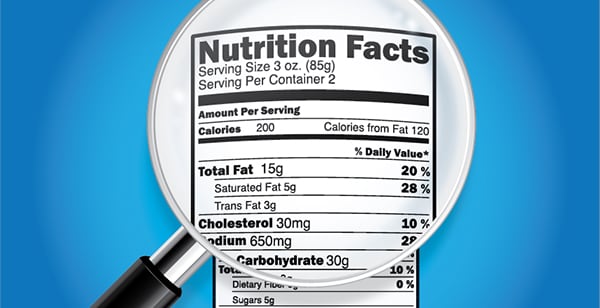



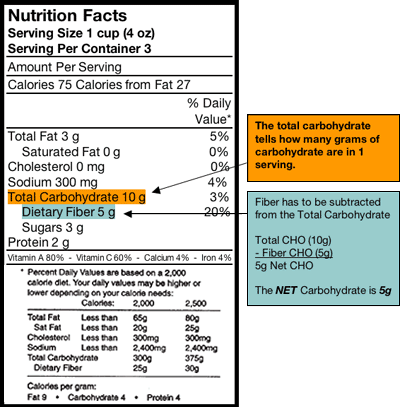
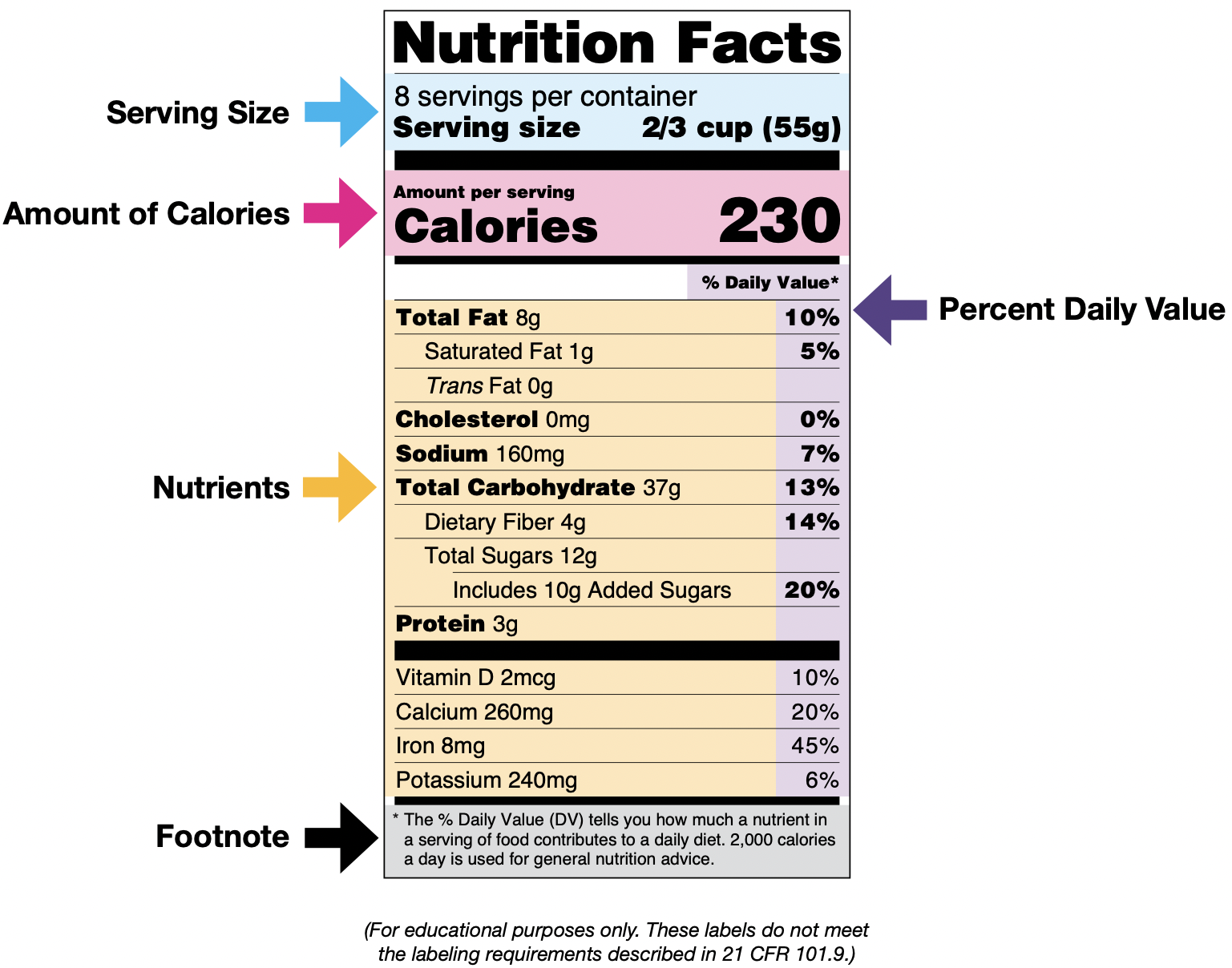
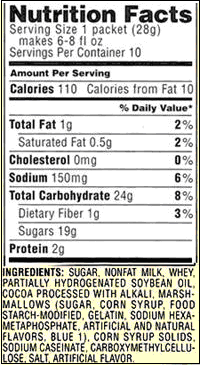

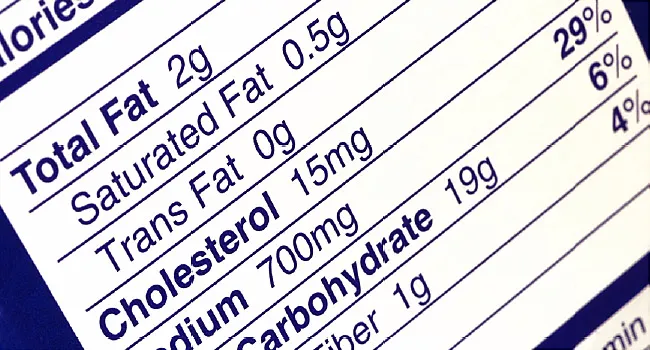


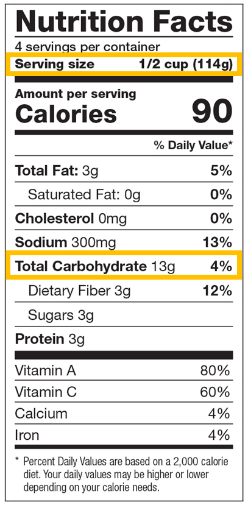
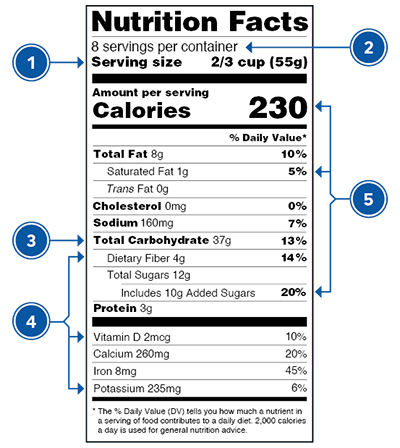
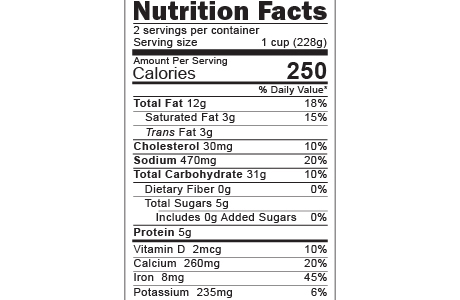


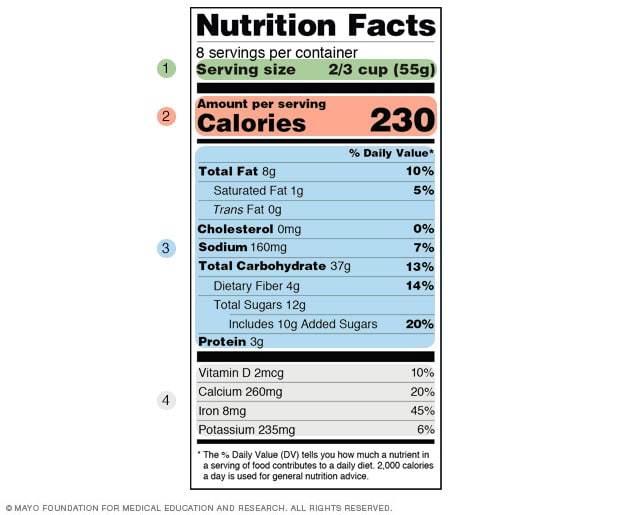
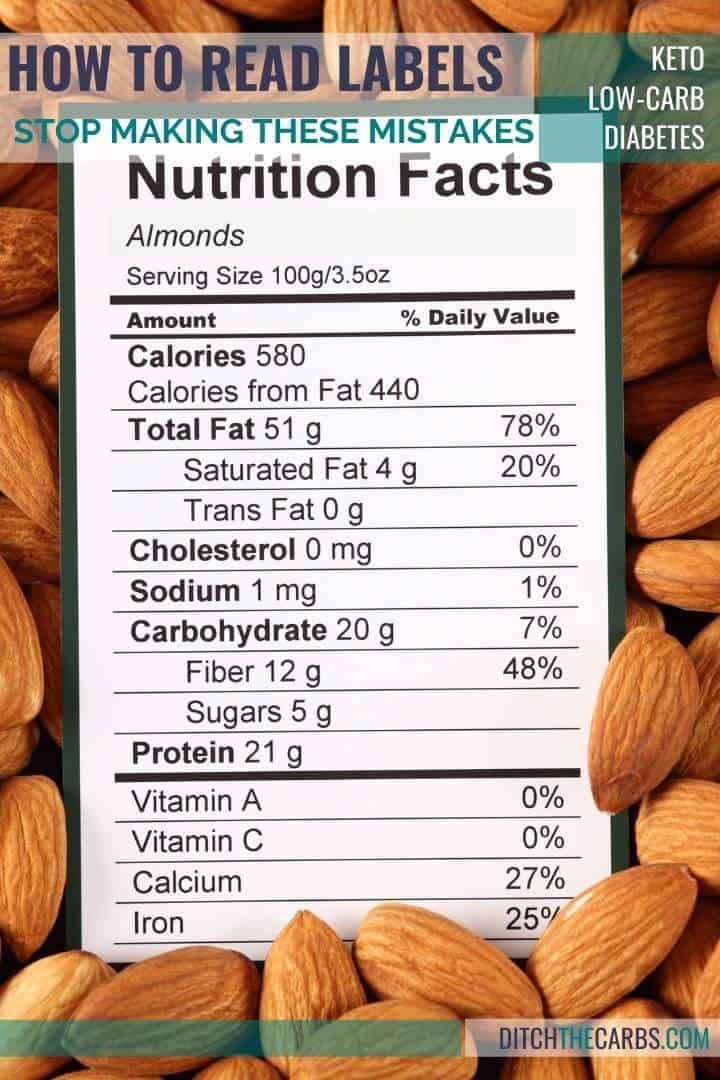


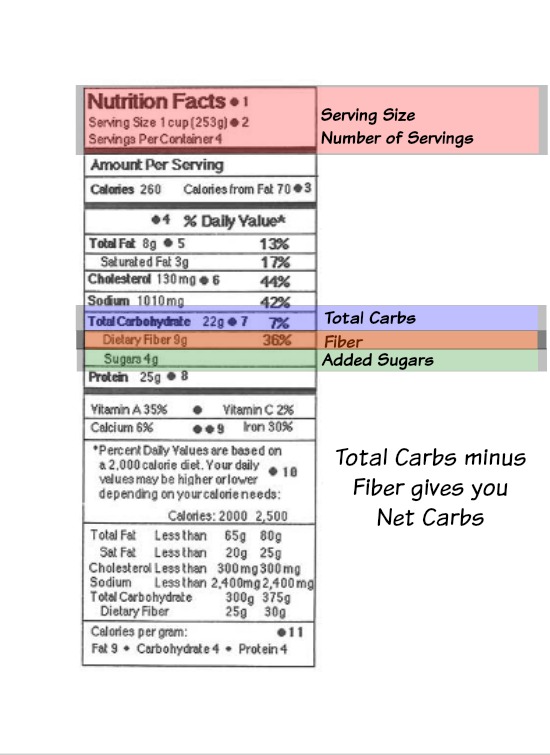
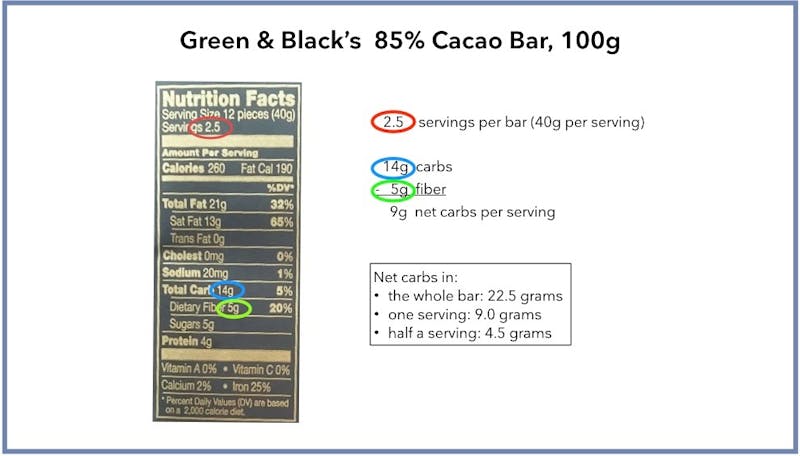
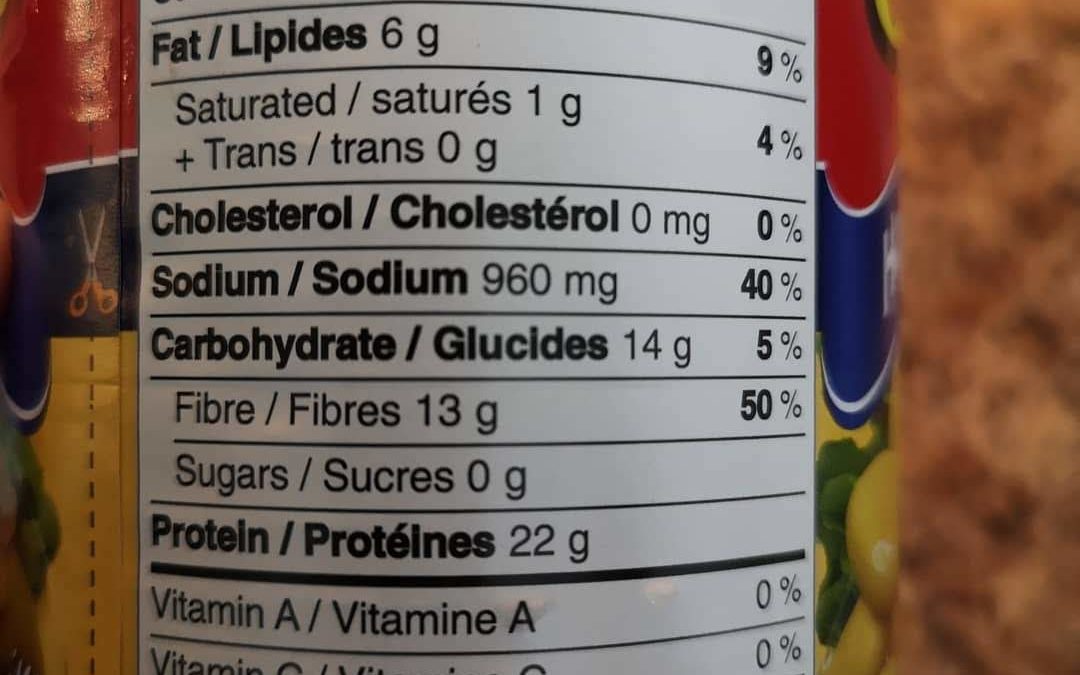



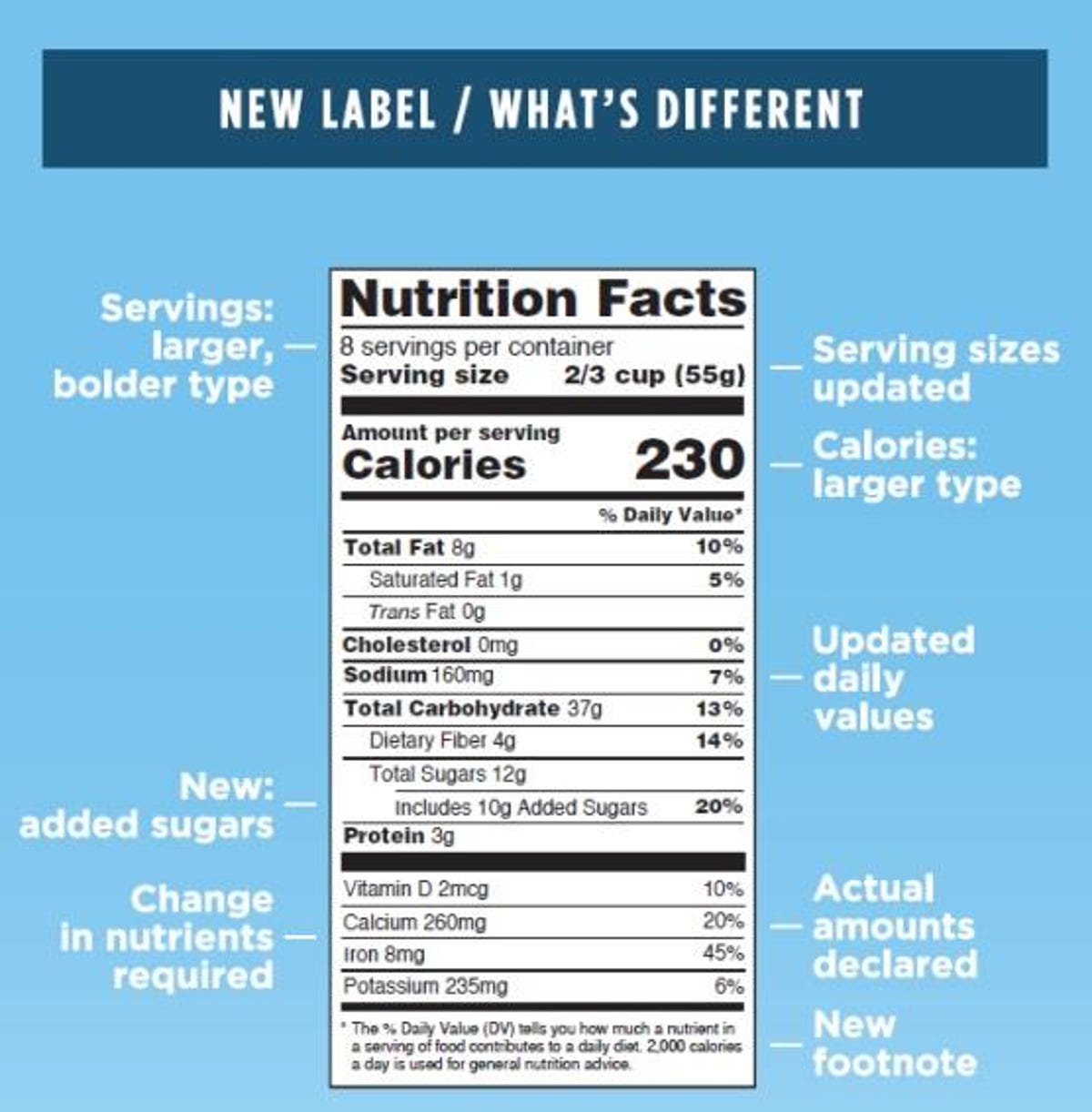

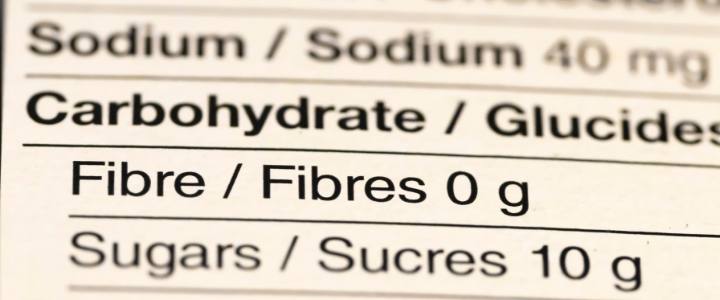



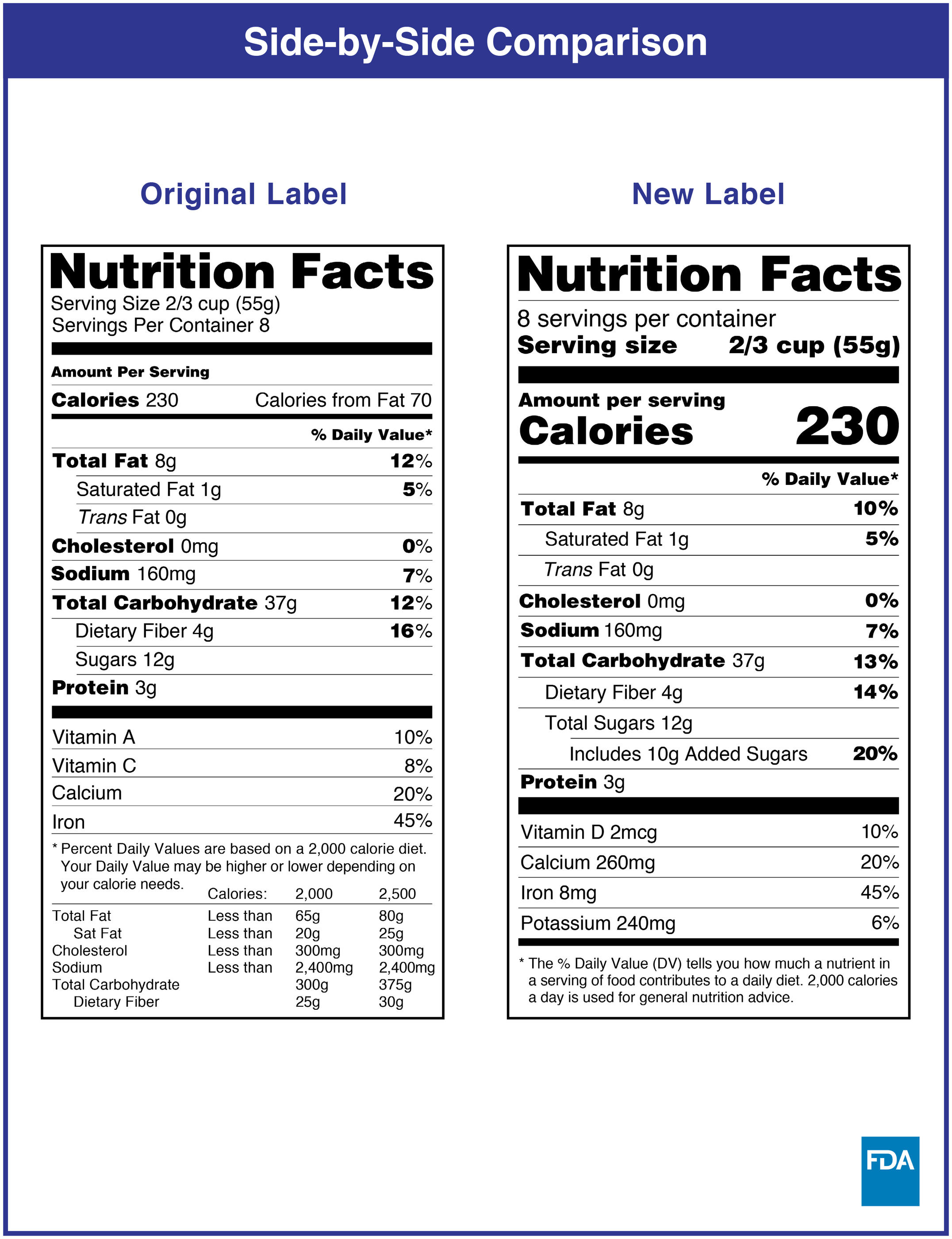

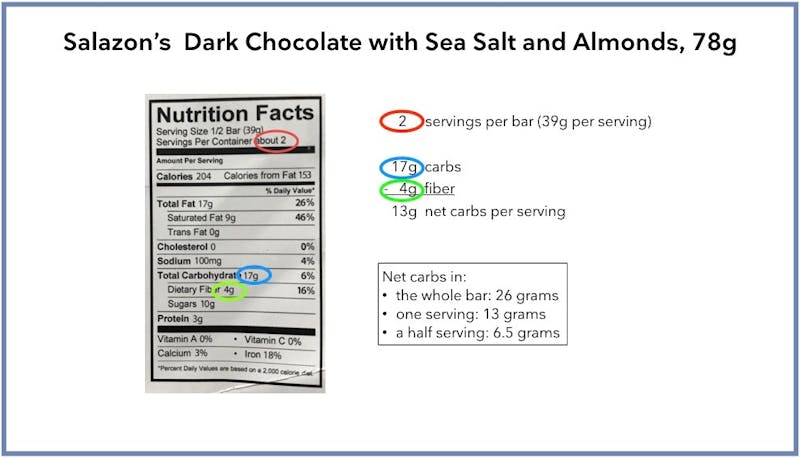

Post a Comment for "41 understanding carbs on food labels"